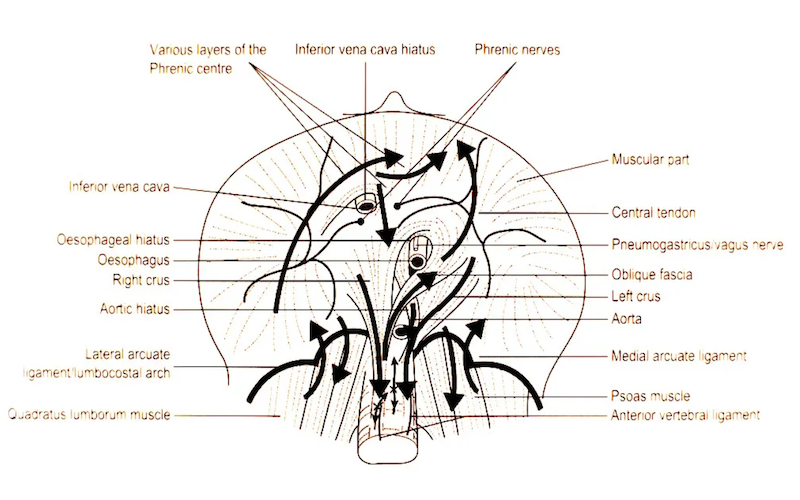
We take approximately 21,000 breaths per day. Each breath changes the shape of the chest wall and abdomen through the coordinated action of the diaphragm, scalenes, intercostals and abdominals, as well as the accessory muscles of respiration. Each breath results in abdominal and thoracic pressure changes which drive the movement and exchange of air into the alveolar spaces of the lungs.

The diaphragm is the primary muscle of respiration and coordinates the function of other respiratory muscles. If the diaphragm is dysfunctional or at capacity, then other respiratory muscles are recruited and may themselves become overloaded.

As we inhale the diaphragm descends, toward the abdomen, from its domed starting position. This descent is met by mobile abdominal organs and resisted by the diaphragms attachment to the lower six ribs – which widen and lift during inhalation.
To preserve life, breathing must continue under all circumstances including sleep, a range of postural positions and extreme oxygen demand. Compared to resting or quiet respiration, intense oxygen demand engages the whole body in radically different patterns of respiratory muscle activation and biomechanics.
FEATURED IMAGE:
Fascia: The Tensional Network of the Human Body (2012).
